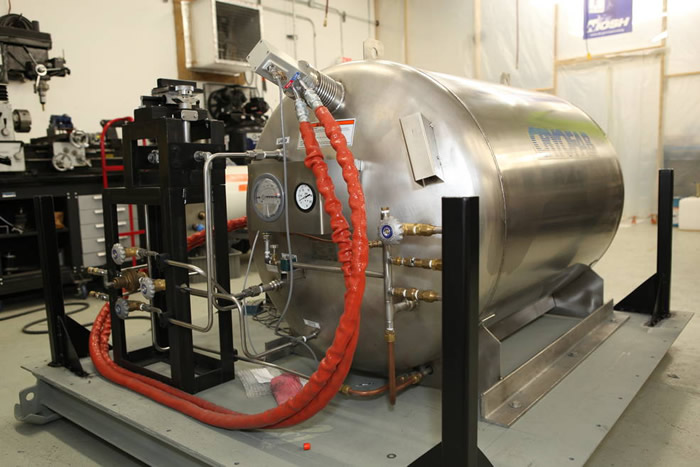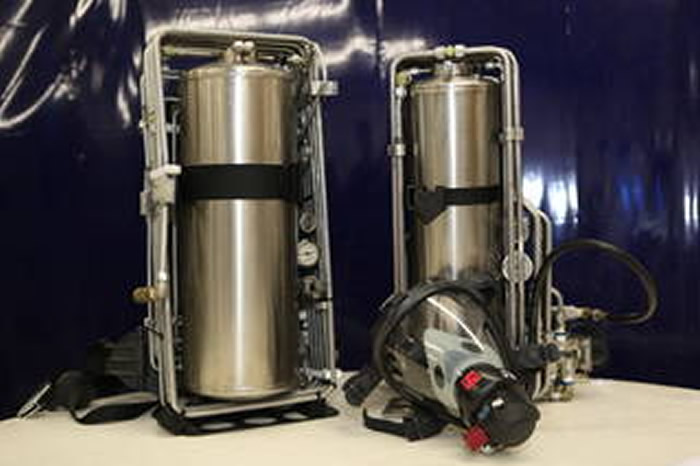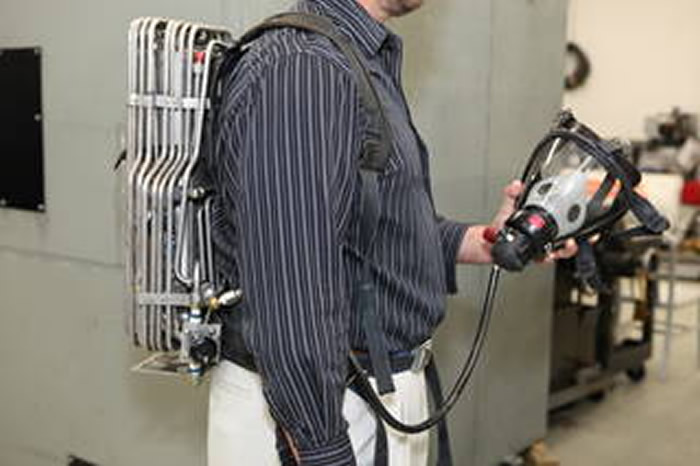Advanced cryogenic breathing apparatus may be shared by NASA
A new breathing apparatus concept has emerged because of NASA’s unique mission requirements, to help with hazardous ground operations and rescue situations.
NASA and the Office of Mine Safety and Health Research (OMSHR) have been trying to resolve current technological issues with cryogenic life support so that it can be successfully commercialized, and develop new applications for cryogenic technologies in life support targeting current issues in the mining life-support industry.
Liquid air packs have been used by Kennedy Space Center for many years for astronaut rescue missions, but the technology has not been used outside of NASA missions.
“Our equipment here doesn’t have to meet all that criteria to be certified; therefore, no one else in the outside world has used it,” said David Bush of Kennedy’s Biomedical Engineering and Research Laboratory. “There are several limitations that prevent anyone else using that technology. For anyone else in the industry to use cryogenic life-support technology, they have to be certified.”
In 2006, OMSHR was directed by the MINER Act of 2006 to explore mine safety improvements. In coordination with the National Institute for Occupational Safety and Health (NIOSH), a project born under an Interagency/Space Act Agreement in 2012, became a reality.
The use of liquid air to save lives of miners in the event of an emergency could be shared.
Using liquid air has many advantages. It has a greater duration for volume, allows for different cooling options and requires much lower pressure. These factors are huge when a miner is trapped in a small space. It’s liquid air-based, so it vaporizes the liquid air and that’s what the user breathes.
One of the problems? Development of a quantity sensor in a liquid system was a challenge due to cryogenic temperatures and a moving liquid level in wearable systems. Bush and other engineers currently are working on two solutions.
The first is a two-point system based on thermocouples. This would show when the tank is full and a quarter full. But the system works only between ±70° of vertical and thus incorporates an accelerometer to ensure it is within range. It currently is being integrated into existing Advanced Cryogenic Breathing Apparatus (ACryoBA) prototypes and tested. There also is a plan to develop a much smaller version with mask integrated LED.
The second is an external sensor array with a float in the Dewar full-range all orientation system which allows for zero to 100 percent indications in any orientation. It currently is undergoing proof of concept testing.
Other issues included the overall attitude independence which eventually was solved with an Attitude Independent Pickup, and the quick fill, solved with an automatic fill/use quick disconnect.
The NIOSH project has five subprojects in an effort to improve technology and make liquid air life support a viable commercial alternative to traditional compressed gas solutions. There currently are three NIOSH subprojects and related work on small scale liquid air production. They include: Cryogenic Breathing Apparatus (CryoBA) – Liquid air-based SCBA Cryogenic Air Storage and Fill Station (CryoASFS) – Long term storage of liquid air with rapid filling capabilities Advanced Cryogenic Breathing Apparatus (ACryoBA) – A project to improve on the design of the initial CryoBA
These subprojects specifically target emergency mine egress, but have potential application in Search and Rescue (SAR), Hazmat, Fire, Department of Defense (DOD), and more.
Prior to the project, Kennedy has used cryogenics life-support technology for many years for ground operations. Personally used liquid air packs, which are cryogenic self-contained breathing apparatuses, or SCBAs, have been used at Kennedy for crew rescue for many years. Kennedy also uses the SCAPE suit, which has a cryogenic air-pack version, a two-hour air pack to drive the suit.
More information: NASA





Comments are closed, but trackbacks and pingbacks are open.